It's about time! Thanks for continuing the journey. On a course full of great holes, this is one of the best.
I've tried inserting photos into Patrick's text. All of the words following are his from the original post.
So, you hole out on # 7 and look around.
You discover, unless you've already been in them, the dimensions, depth and nature of the surrounding bunkers as you head back toward the 8th tee.
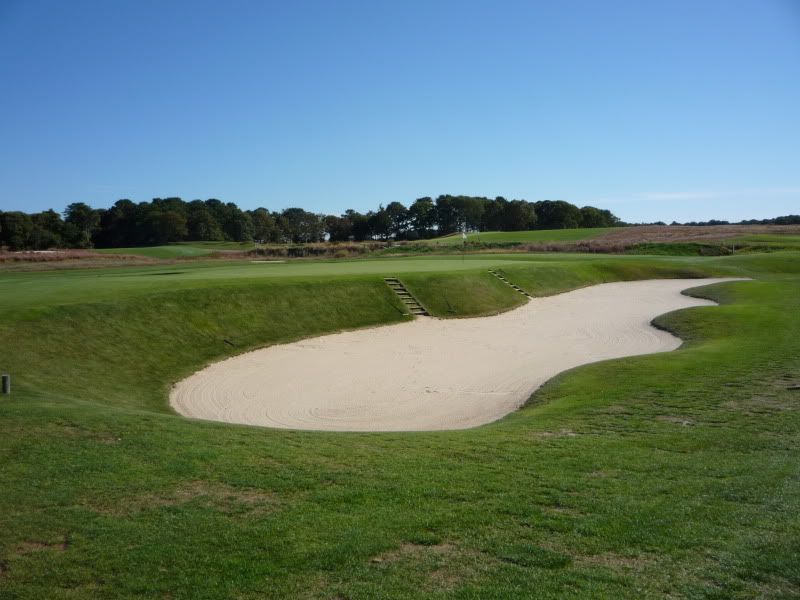
You have to walk back on the 7th green to get to the 8th tee which is almost in the approach area along the right flank of the 7th fairway.
As you walk back to the 8th tee you see the large, deep bunker flanking the 8th tee that serves as a hazard on # 7.
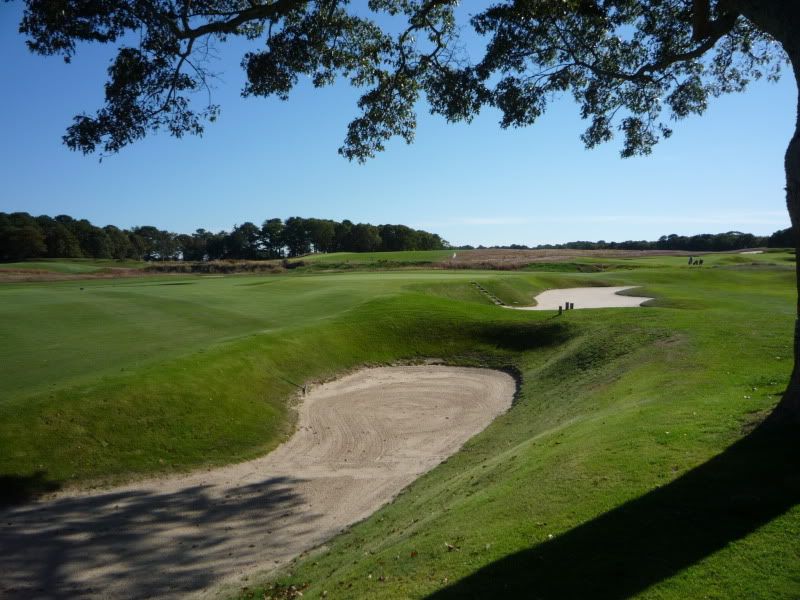
The 8th tee is elevated above the 7th fairway and deep bunker.
As you walk back to the 8th tee from the 7th green, your back is turned to the 8th hole.
When you finally arrive and turn around to view the hole before you tee your ball up, you're confronted with a puzzling view.
On the 7th tee, you looked into an indistinguishable horizon and asked, "where in the hell do I aim ?"
On the 8th tee you ask yourself the same question, but, for a different reason.
On the 8th tee, nothing in front of you is indistinguishable, in fact it's all brazenly displayed in front of you.
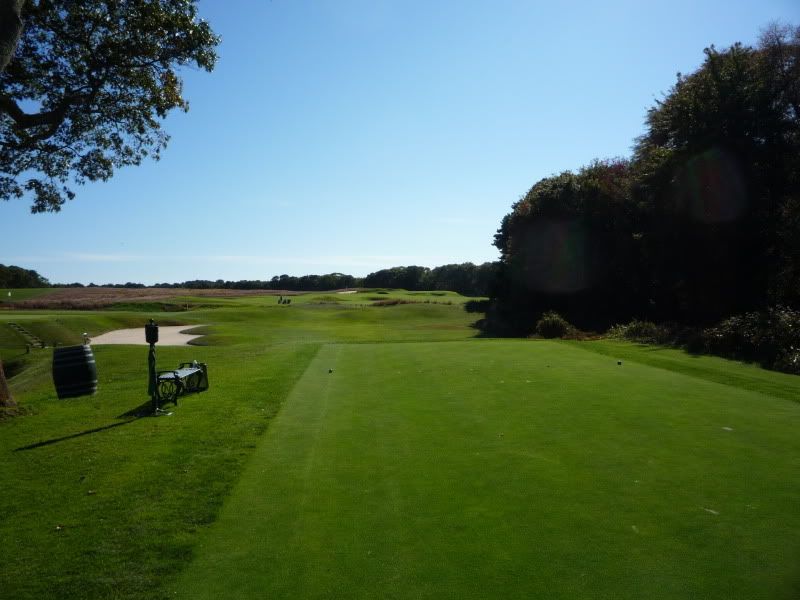
As you look out, you see a berm running perpendicular to the fairway, a berm that's shielding the bisecting road that divides # 8 and # 11, then you see bunkers, bunkers flanking the left side of the fairway, bunkers flanking the right side of the fairway and shock of shock, a string of bunkers right in the middle of the fairway.
So now, you ask yourself the same question you asked on # 7 tee, "where in the hell do I aim ?"
The right side looks more generous, the left side almost certainly requires a carry over the centerline bunkers and only the longer golfer contemplates carrying the entire string of bunkers.
But, there's more.
Not untypically, there's a breeze, and it's usually in your face, and it's a damp breeze, one that quickly brings golf balls to earth.
You survey what's in front of you again, noting the slope of the two fairways.
Then, and only then do you see beyond the drive zone, further up the fairway, then you look even further up the fairway to the fortress like green perched high above the fairway, guarded by fronting bunkers and a right side of the green that looks as if it plunges into oblivion.
Your focus returns to the DZ and your pending decision.
Sometimes a passing car distracts you.
Sometimes you wonder what would happen if you should hit a line drive or top your tee shot.
Based upon your play so far, you make your decision and hope to execute the drive as planned.
The left side of the fairway is elevated above the right side.
The left side of the fairway is flatter than the right side, which slopes from high left to low right.
The right side bunkers are further below the fairway.
And, the centerline bunkers all have steep faces preventing anything but a lofted shot from escaping.
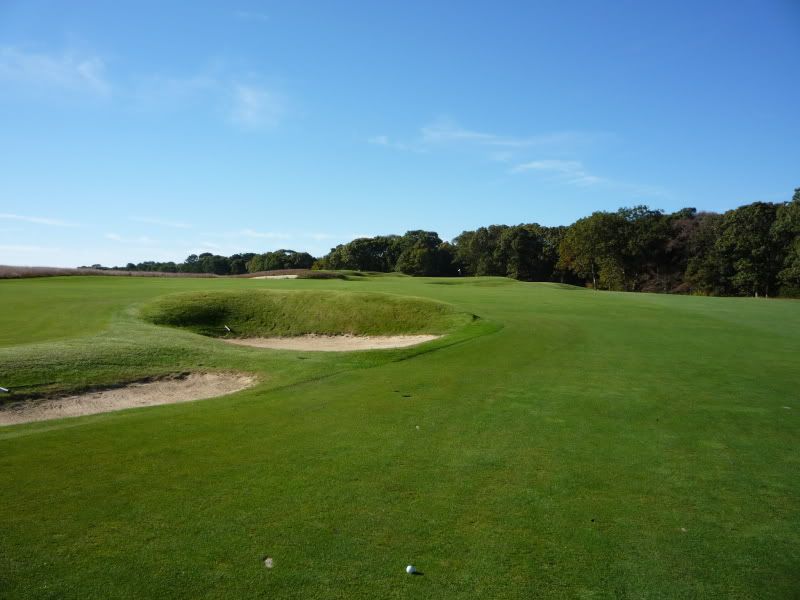
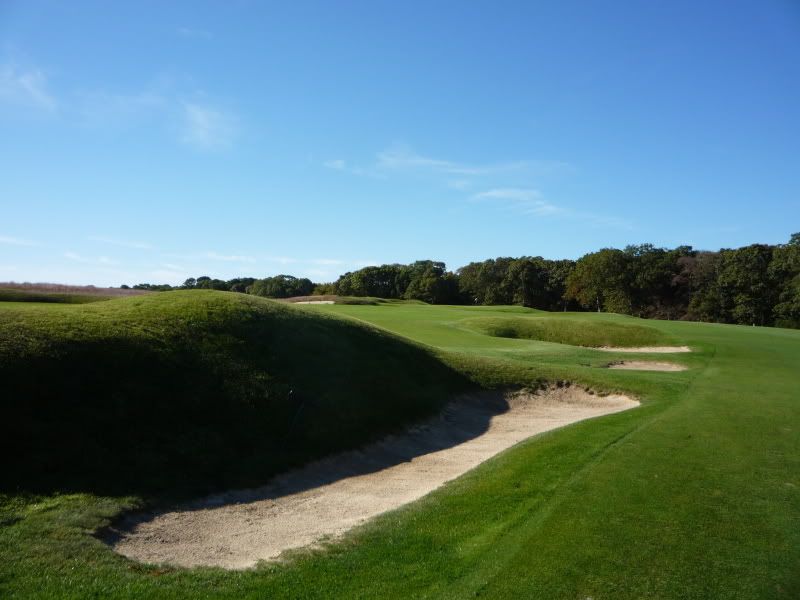
So, you hit your drive, hoping, hoping that it alights on the fairway.
Should you be lucky enough to avoid the various bunkers, you're now faced with a daunting task, for in the distance and well above you sits the green, perched high in it's defensive mode.
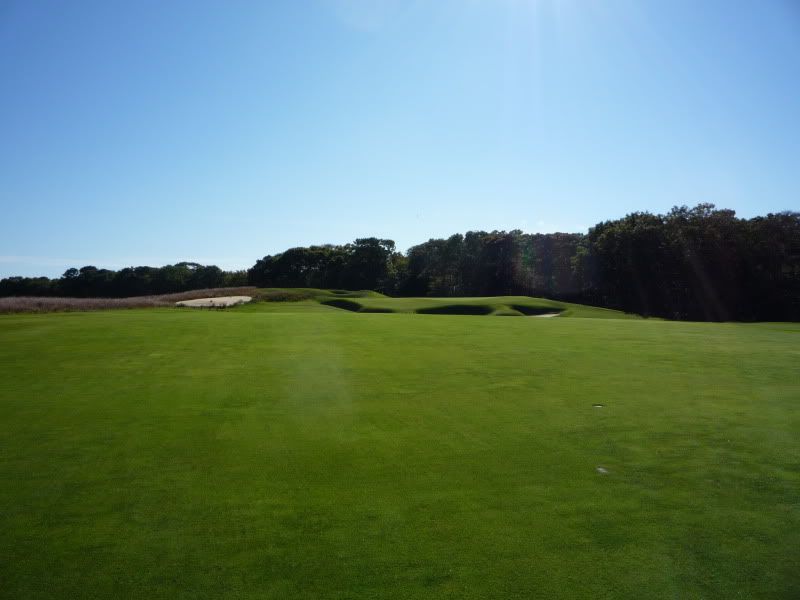
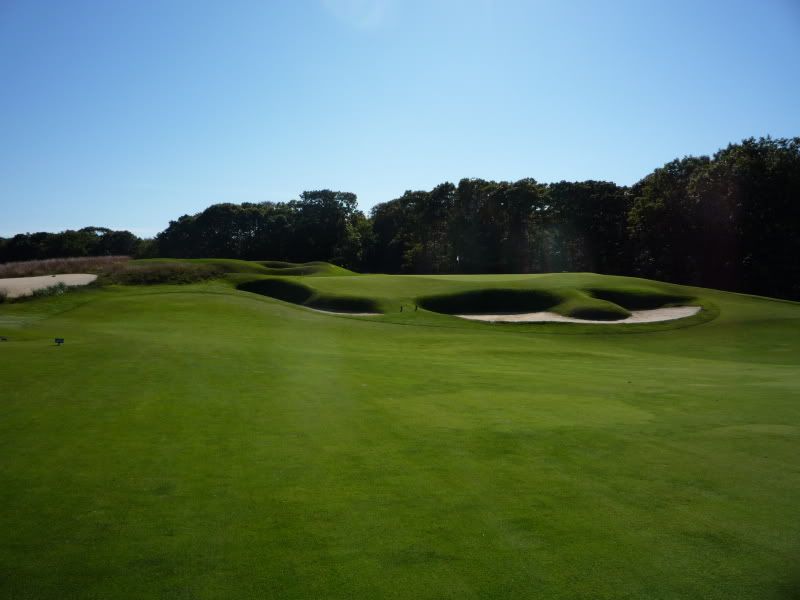
On this green more than others, hole location can ruin your score on this hole and your disposition for the rest of the round.
The elevated green is protected, first by it's elevation, second by the steep slopes, third by the fronting bunker, fourth by the bunkers and mound left of the green, fifth by the extremely steep falloff left and lastly by the runoff at the back of the green, which was formerly a bunker.
Adding to the dilemma is the lie you have, it's a side hill, uphill lie on the right and a less uneven lie on the right.
It would be uncomfortable with a benign green, but, with the fortress like, elevated green, it's even more disconcerting.
The visual of the fortress like green from the fairway, rough or bunkers can be so incredibly intimidating.
Now you're starting to think that bogey isn't such a bad score.
When the hole is cut along the right flank, which is a straight line, along the steep falloff, from the fairway, the flag looks like it's suspended in space, or on a gangplank.
You can't believe your eyes.
You see the steep front slopes of the green, the flagstick and then the woods forming the backround.
You can't see the putting surface, you have nothing framing the hole, just a flag suspended in space.
It's very, very intimidating, even to the seasoned golfer who's played here 100 times.
When the flag is cut in the front, the first time golfer, especially the one using his lazer range finder, is in for a rude awakening.
The front of the green is very subtly sloped, from about 10 yards into the green to the front of the green, you can't really see it, but, you can see the subtlty vis a vis the results as balls with spin land on the front of the green and slowly but surely begin their journey back toward the front of the green, then down the steep slope into the deep fronting bunkers.
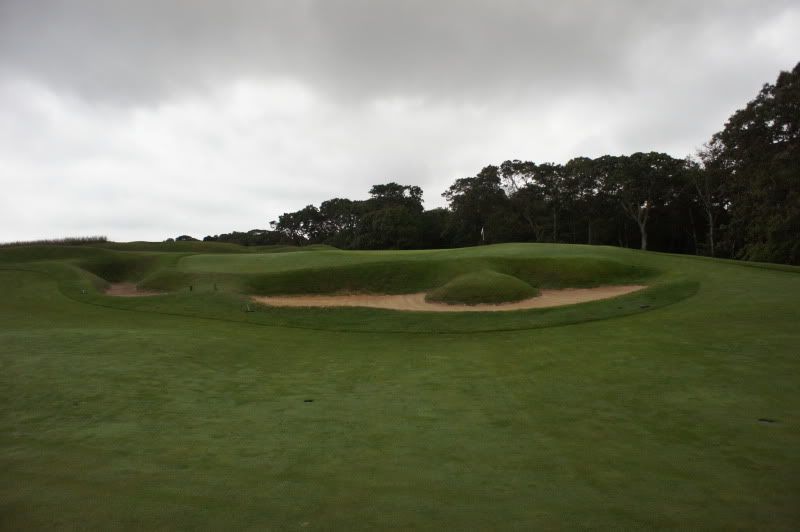
Often, golfers who hit their approaches short, which find their way into the fronting bunker are in for another rude awakening when their perceived recovery, with some spin, begins to roll back, off the green and down into the bunker that they just played from.
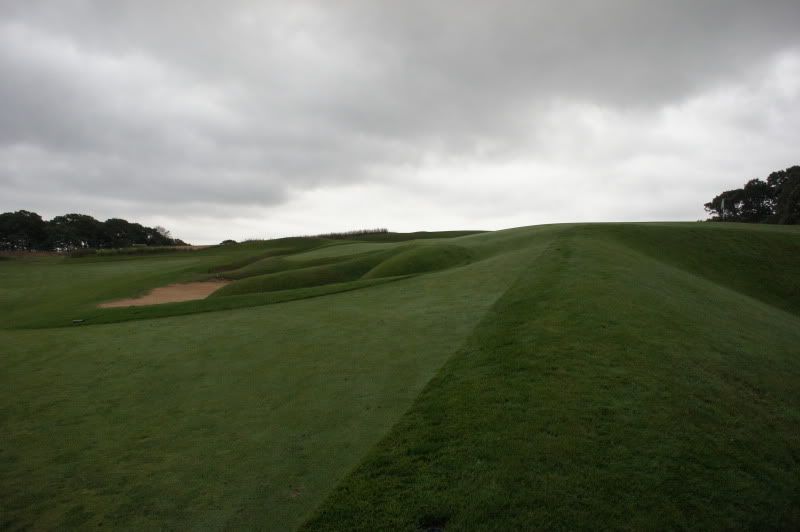
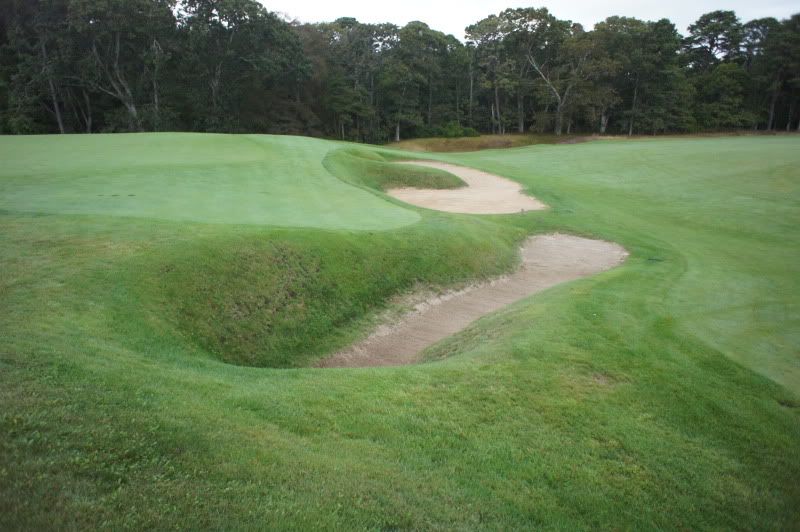
Approaches hit right find themselves far, far below the green, with no visual to guide them, just the horizon line presented by the right flank of the green.

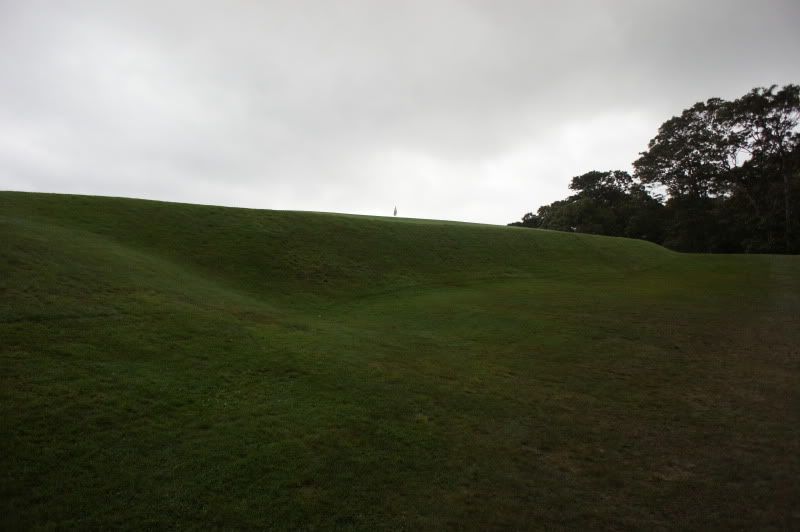
Approaches hit left face a different fate, they're either in the left side bunkers or the uneven mounding flanking the left side of the green. As if that isn't bad enough, they're now faced with a shot into oblivion, for if they hit their recovery too hard, they'll fly or roll off the green and down, down the steep slope to an area of rough far below the green.
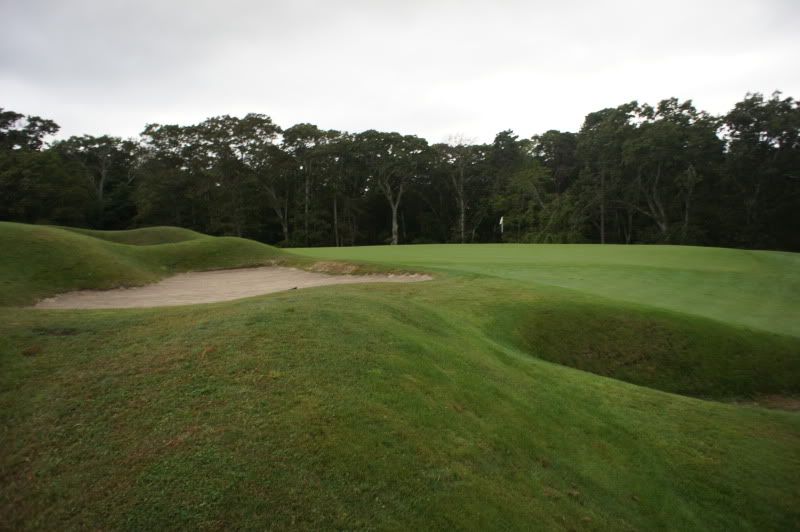
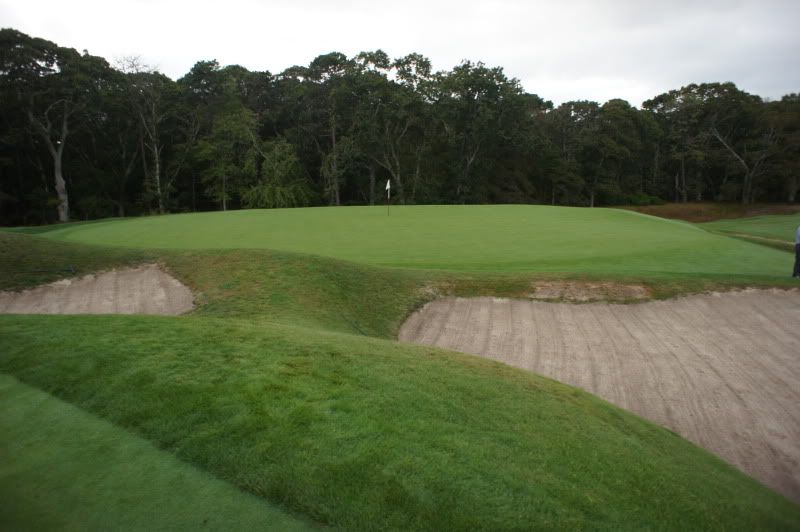
Approaches hit long face a difficult recovery.
The neat thing about the green is how much hole location influences approach and recovery shots.
For example, if the hole is cut in the front and you go long, even on the green, the recovery or putt, back to the front of the green is very dicey because, should you err on the strong side, you can degreen your ball, having it roll back down the front of the green into the bunker.
Recovery to different hole locations is like playing completely different shots.
If the hole is cut far right, and you're in the left side bunker, you are scared stiff that a thin bunker shot will end up off the green, down the steep slope, leaving you another very difficult recovery. Leave those shots short and your chances of three putting grow, exponentially.
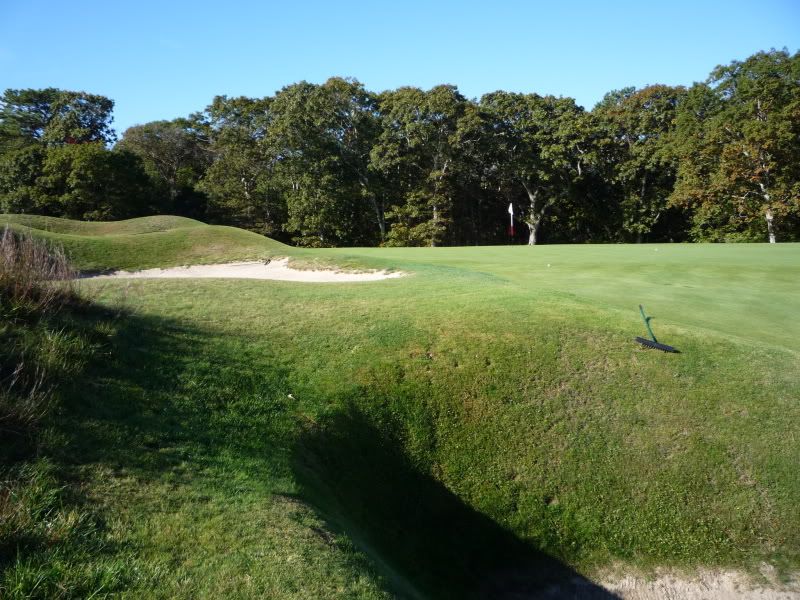
The putting surface is large, but, unless the hole is cut in the donut center, you're putting very defensively.
The front of the green slopes very subtly toward the front and the mid-point back, slopes to the back.
When the greens are firm and fast, approaches and recoveries and putting is a real challenge with all of those shots dictated by hole location.
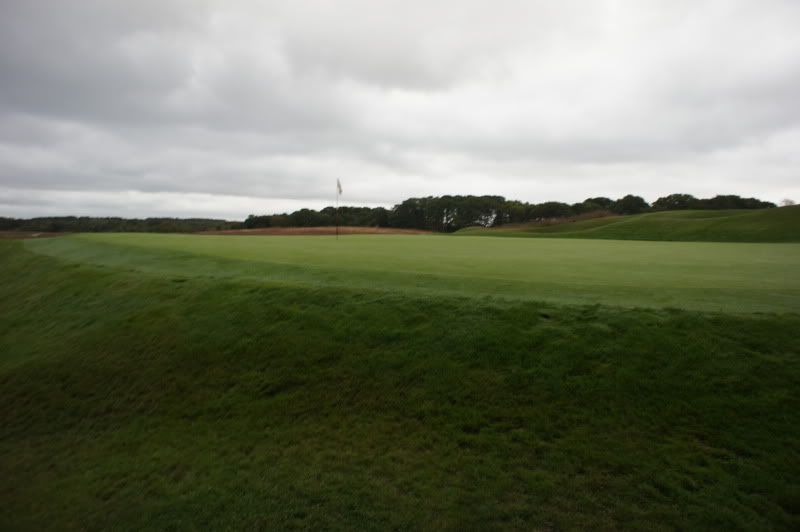
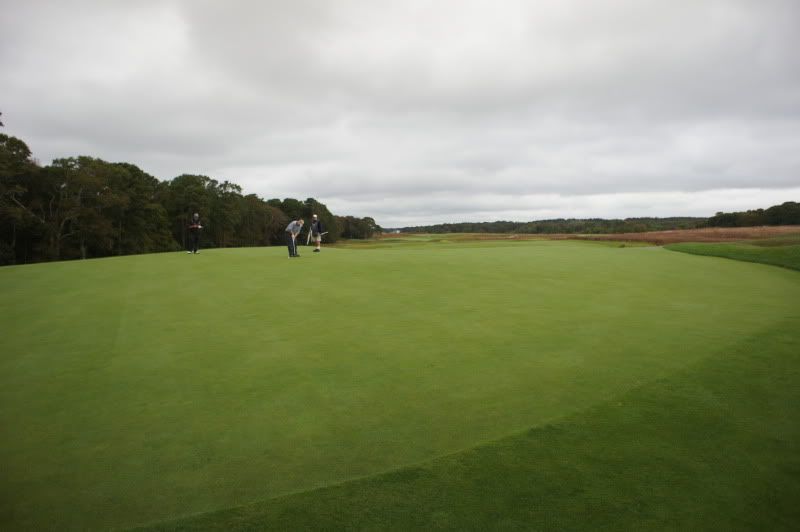
On to the 9th tee.
This is a hole, when you hole out, that you often look back and down the fairway and ask yourself, where did you go wrong ?
How did this hole, from start to finish, unnerve you.
It's an incredibly unique hole, unlike any that I've ever played, and in medal play competitions, a hole to be feared, with a par being a great reward.